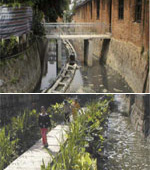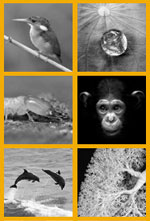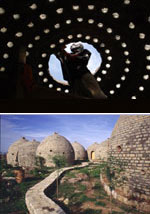 |
|
JOHN
TODD: DESIGN WITH NATURAL ECOSYSTEMS KNOWLEDGE
<Can we not learn what a forest or a lake knows, and convert it into technologies that in the future would feed us, provide our energy, transform our waste and even repair our damaged environments? I knew that there are efficiencies, ingenuity and symbiotic relationships in nature that are so powerful -- if we could just decode its language we could change the way we do things.>
Interview
to John Todd
Living machines
Todd
Ecological Design
http://en.wikipedia.org/wiki/John_Todd_(biologist)
|
|

|
|
JANINE
BENYUS: WHAT CAN NATURE TEACH US?
<...bio-mimicry is basically innovation inspired by nature; it is looking to nature for advice, design advice, when we are trying to create new products or processes.
It's borrowing nature's designs and recipes and strategies, and actually emulating them.
So for instance, if you are making a new kind of solar cell, you might want to look at leaves as your model. And ask, how do leaves photosynthesise? Then try to copy the design that nature has evolved over 3.8 billion years.
... biological knowledge is doubling every five years. Enormous amounts of data, and now with all the searching tools, we are able to look functionally to find some of these answers. >
CNN: Interview to Janine
Benyus
The 11th Hour (film)
What could Nature teach us?, Case
Studies, Biomimicry Institute:
http://www.biomimicryinstitute.org/
Video Janine
Benyus: 12 sustainable design ideas from nature
http://www.asknature.org/
|
|
 |
|
FABRIZIO CAROLA: DESIGN AND BUILD STARTING FROM THE PLACE
<I've always been respectful of the relationship between material, technology, function and form because the correct relationship of these four elements determines the economy of the project and even its success. In most cases, in our Western world, this relationship leads to a solution of flat surfaces to 'repress' the desire for curved surfaces, considered too complex and costly to achieve.
In Africa, however, I found totally different conditions that turned the tables on this situation, whereby the use of curved forms proved to be a logical solution. [...] The land, abundant and almost zero-cost, in the form of baked bricks or raw material, is the cheapest and more widespread material.
To use brick or stone even for roofing, in place of wood, steel or concrete, one must necessarily resort to compression structures, namely: vaults, arches and domes.>
Memorie
di un architetto col mal d’Africa: Fabrizio Caròla
a colloquio con Luigi Alini
http://www.neagora2111.net/
http://www.neaculture.it/
|
|
 |
|
GLENN MARCUS MURCUTT: TOUCH THE EARTH LIGHTLY
<I have always believed in the act of discovery rather than creativity. Any work that exists, or which has the potential to exist is related to discovery. We do not create the work. I believe we, in fact, are discoverers.>
<.... I've been working for 35 years on harnessing the planet's gifts for homo sapiens - the wind, sun, shade, perfumes of plants, water, prospect, geology, flora, fauna, water table, drainage patterns, topography/contour, oh! it goes on ....>
<
The future lies with our younger architects and with our understanding of the conservation and the ecology of our planet .... I think that the landscape is really the appropriate common thing to all of us .... I am talking about the conservation of materials, the conservation of land, the keeping of old growth forests, the understanding of how we might be able to find a sustainable building.>
Pritzker Price 2002:
ceremony speech: http://www.pritzkerprize.com/laureates/2002/ceremony_speech1.html
Kenneth Frampton speech: http://www.pritzkerprize.com/laureates/2002/essay.html
Glenn Murcutt Portfolio: http://www.ozetecture.org/oze_NEW_portfolio_glenn.html
Architecture Foundation Australia: http://www.ozetecture.org/oze_NEW_index.html
|
|
|

